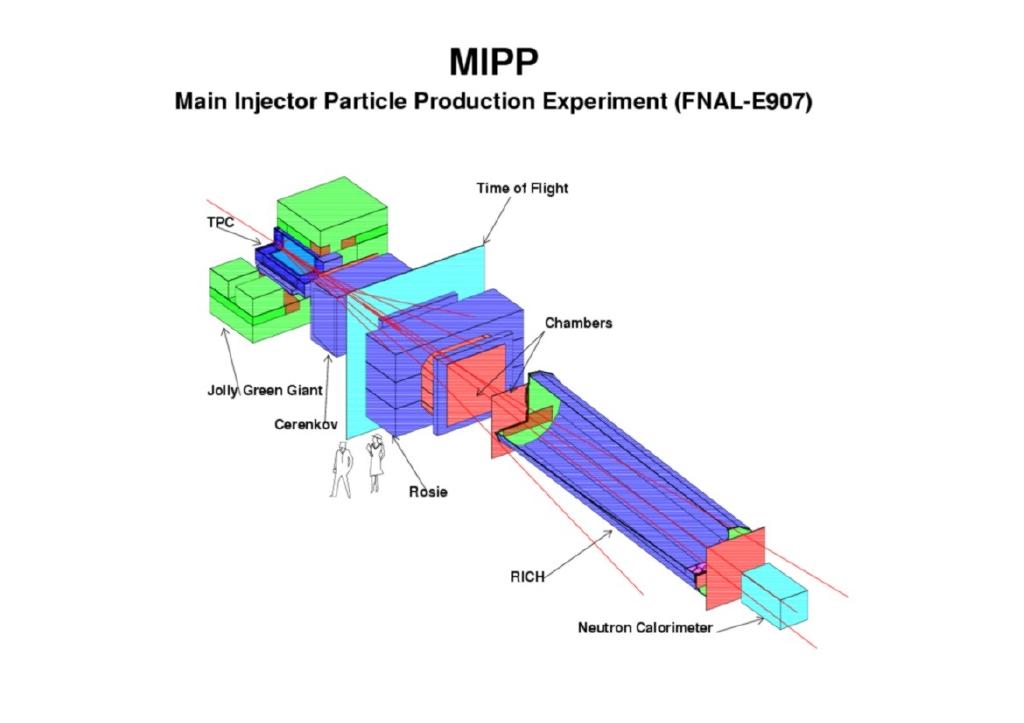

MIPP was designed to perform precision measurements of hadronic cross sections using proton, anti-proton, pion, kaon, muon and electron beams on heavy and light nuclei. The MIPP experimental program is intended to supplement and extend the world's knowledge of medium energy particle production from 5-120GeV/c.
Included in the E907 experimental program are detailed studies of neutrino production on thick graphite targets for use in predicting the neutrino spectra, that can be expected and observed when the MINOS and Neutrinos At the Main Injector (NuMI) projects start full operations in the spring of 2005. In addition to neutrino production target studies, the MIPP experimental program is focused on performing measurements critical for improving proton radiography, nuclear fragmentation scaling, strangeness propagation through matter, and other subjects in modern nuclear and particle physics.
The University of Virginia research group has been heavily involved in the commissioning and operations of the MIPP spectrometer. The University of Virginia modified and installed the Hadron Calorimeter (HCal) which was originally built by UVA for the HyperCP (FNAL-E871) experiment in 1997 and developed the high voltage controls and monitors used throughout the experiment. During the 2004/2005 run cycles the Virginia group additionally assumed responsibility for the commissioning, calibration and operations of 9728 channels of narrow pitch wire beam chambers and large aperture drift chambers which serve as the primary tracking chambers for the beam tagging and forward spectrometer. The Virginia group also constructed the particle identification tagging triggers, and the final state interaction detection triggers, based upon the large aperture drift chambers. For the 120 GeV/c studies of the NuMI production target, the Virginia group built and installed small scintillating fiber cross-hair detector for use in alignment and fine positional adjustments of the main injector beam on the production target.